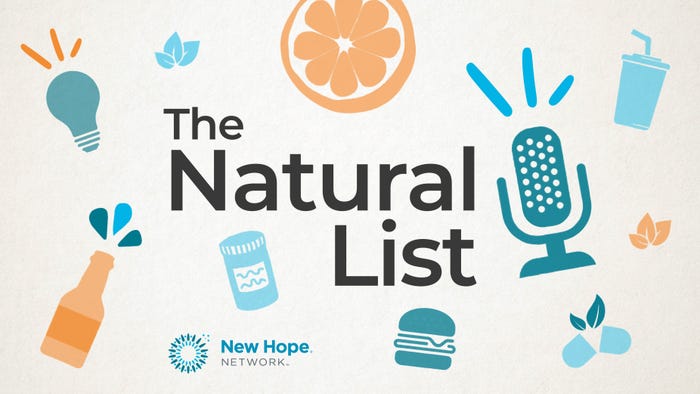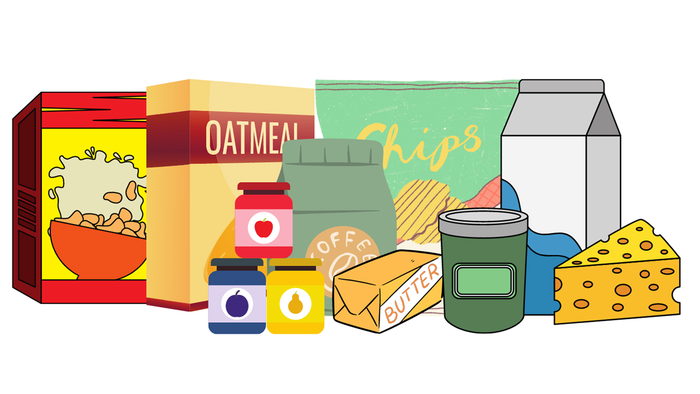Q&A: Why snack brand Banana Joe is picky with its produce
Using only one particular kind of banana can sometimes cause sourcing challenges, but it allows this brand to stand out in the snack aisle.

Banana Joe began in 2012 when friends Nat Meechubot and Joe Vachiravich Sirichokvanich got together with a common goal: to develop a fun and accessible way to share the exotic and unique flavor of their Thai bananas with the world. The result? A banana chip that truly mimics a potato chip, utilizing only the best Hom Thong bananas, valued for their sweet and creamy taste.
Today, Banana Joe offers trendy varieties like Sriracha with Pickled Garlic, Gruyere Cheese, and Thai Sweet Chili alongside longtime favorites like Hickory BBQ and Sea Salt. And, in 2017, the brand was noticed with a Nexty nomination in Best New Snack category during Natural Products Expo West.
Here, we chat with cofounder and general manager Nat Meechubot about the earliest days of Banana Joe, the challenges associated with sourcing the best banana, and what’s next for this innovative brand.
What was the inspiration behind Banana Joe?
Nat Meechubot: Joe and I are longtime friends who love to eat great food. We decided that good snacks were not so abundant on the market, nor did they offer the same taste as regular snacks—hence, a huge compromise. In an effort to bridge that gap, we wondered what could be made. Looking at the best-selling snacks on the market, it was evident that people just loved chips. It was dominated by potato chips, with some baked potato chips emerging but they tasted rather dry. We saw vegetable chips come to the market, but again, also not great tasting. We thought, what could we do better? The only way to push the envelope was to look for a fruit, and years of testing resulted in Banana Joe. Our motto is simple: Believe in taste.
We tend to make people happy. We have seen a mother walking down the supermarket aisle with her child, the mother wanting fresh fruits, the child wanting potato chips. Neither were able to compromise, until now, and we are happy that both sides can be happy.
Why do you prefer Hom Thong bananas over other varieties?
NM: We have eaten over 30 varieties of bananas. We did not even know there were that many before we started our venture. Our Hom Thong bananas are by far the best tasting bananas. In fresh form, they have an aroma that is unmatched by any plain cavendish banana that you typically find in the supermarkets. The Hom Thong is the original banana so to speak—the ones your grandparents were able to eat. But to make bananas more resistant, the cavendish was developed. And while they might be more resistant to insects, weather and disease, they just do not have as much flavor to them. People always ask us why our banana chips taste like a real and proper chip, not like the thick chunks of banana chips they have previously tasted, and the answer is simple: we pick the best bananas. The chips are light, thin, airy and crispy.
What kinds of sourcing challenges exist surrounding this type of banana?
NM: Using only one type of banana is always a challenge. That means that we grow in tempo with our farms. We cannot grow faster than the farmers we work with. There are seasonal highs and lows with bananas as well, and we are always at risk during the rainy seasons, where high winds can knock down banana trees. Working with fresh produce that cannot be stored, there is always risk involved.
We work with small, family-owned farms—they own one hectare or less—which means that we have to work with a lot of different farms. While smaller farms grow the best bananas, there is always a challenge to time the harvest in tune with our customer requirements. There is lots of coordination involved—it’s bananas!
How have you overcome these challenges?
NM: For weather challenges, we try to work with farms from different geographic areas. That gives us a bit of leeway so if one area has bad weather, the other areas might be okay. Every few years, however, there can be a bad storm and everything gets hit. It’s nature, and we simply just work with the farmers and rebuild right away.
There can sometimes be shortages, so we do try to promote growing Hom Thong bananas as well. It takes time though, and we would like to help more farmers grow Hom Thong bananas.
What's next for Banana Joe?
NM: We are just scratching the surface of the market at the moment, so we really need to get the message out and get people to try Banana Joe. Fortunately, 99 percent of people who try Banana Joe say they are the best tasting banana chips they have ever tasted. We would like to think that we are the best fruit chip on the market, delivering a true chipping experience while eating a fruit. Getting the message across of how we harvest our bananas fresh everyday, and harvest it green just before it turns yellow so that the prebiotics of green bananas are still there while naturally low sugars, is something we will concentrate on for the future.
About the Author
You May Also Like


